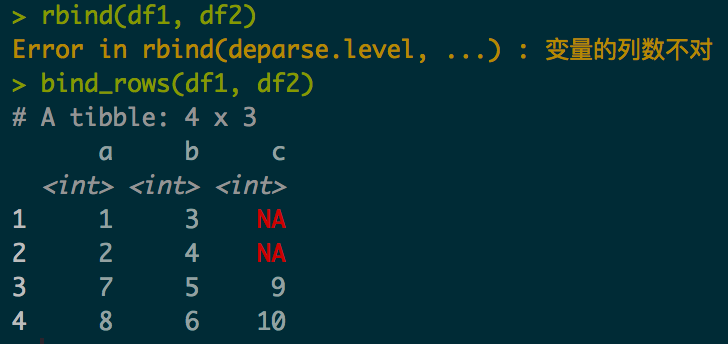library(dplyr)df1 <- tibble(a = 1:2, b = 3:4)df2 <- tibble(b = 5:6, a = 7:8, c = 9:10)

Although bind_rows() is more functional in the sense that it will combine data frames with different numbers of columns (assigning NA to rows with those columns missing), if you are combining data frames with the same columns, I would recommend rbind().rbind() is much more computationally efficient in cases where the data you are combining are formatted the same way, and it simply throws an error when the number of columns is different. It will save you a lot of time for big data sets. I would highly recommend rbind() for these situations. Nonetheless, if your data has different columns, then you have to use bind_rows().
https://stackoverflow.com/questions/42887217/difference-between-rbind-and-bind-rows-in-r

